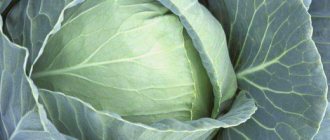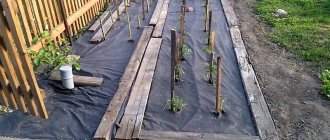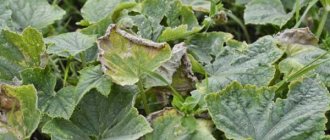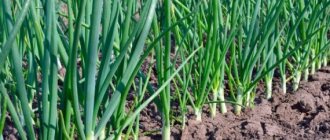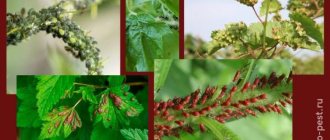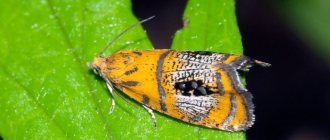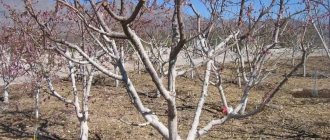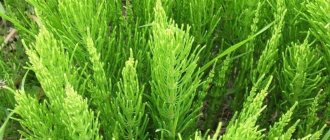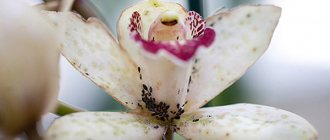For many gardeners and gardeners, slippery cold slugs cause an irresistible disgust. With their arrival, there is a threat to the future harvest at the dacha. Gastropods slowly but painstakingly destroy plantings of cultivated and ornamental plants. Therefore, you should seriously think about how to get rid of slugs in the garden.
Slugs (pictured) are terrestrial gastropods, the closest relatives of snails
Before getting rid of slugs on your property, you need to find out their place in the food chain and find out the characteristics of the pest’s life cycle.
Meet the enemy
Slugs belong to the group of mollusks; more than 250 species of these creatures are found in our country. Slugs love to eat - they like lettuce, cabbage, strawberries, raspberries, currants, carrots, asters, petunias, zinnias, dahlias, lilies, nasturtiums. They gnaw on the shoots of young plants, eat holes in roots and leaves, and damage fruit, vegetable, ornamental and other plants.
It's impossible to get rid of pests forever, but there are ways to control or reduce their numbers, keep them away from well-kept flower beds, and reduce losses. It is the naked slugs (without shells) that cause the damage. Their brothers with a house on their back are mostly harmless.
The main culprits of losses:
- Limacidae - from the pulmonary family.
- The Spanish slug (Arion lusitanicus) is a mollusk of the pulmonate family. Can grow up to 15 cm, gray-green, sometimes yellow-brown. Omnivorous, reproduces very quickly, is considered an invasive species, a pest.
- The netted slug (Deroceras reticulatum) is a mollusk from the family Agriolimacidae. It grows up to 6 cm, is gray-yellow or dark red in color, and leaves behind a thick whitish mucus.
Attention! Slugs are omnivores, they even feed on feces, so they can carry dangerous viruses and bacteria - you should not touch them with your bare hands, it is better to collect pests using rubber gloves.
Mollusks feed in the evenings, at night and in the morning, when dew appears. During the day they hide in cool, shady corners of the garden:
- under stones;
- in thick grass;
- under a pile of boards;
- near the composter;
- in decomposing plant debris.
If there are a lot of mollusks, they can cause great damage to flower beds and beds. Naked snails (without shells) are omnivores and cause the most damage to the garden. They can eat whole plants, often feeding in the lower parts, on young plants, and eat irregular holes in leaves, leaving sticky mucus behind. Slugs destroy the roots of root crop plants - carrots, parsley, beets.
However, slugs are important from an ecological point of view. Most shellfish feed on dead and rotting matter, including:
- dead, rotting plants;
- fallen leaves;
- mushrooms;
- falling fruits;
- animal droppings;
- carrion.
If clams are eating lettuce, the leaf may already be damaged or diseased. The great slug (Limax maximus) is a voracious predator that feeds on slugs (including those that eat lettuce) and other pests.
Ultimately, if it were not for slugs and similar organisms, recycling of organic material would be more difficult, and nutrients needed by ecosystems would remain encapsulated in the cell walls of dead plants and animals. Slugs and snails themselves are also a valuable food source for:
- insects,
- toads,
- snake,
- Zhukov,
- birds.
Therefore, dealing with snails is not so easy. This is a fight against windmills, warn gardeners and farmers.
How to prevent damage to valuable plants? There are many tips on how to get rid of slugs on cabbage, strawberries, in greenhouses and basements - some are myths, others are more effective. Using chemicals is an effective solution. However, while these drugs limit the number of slugs, they also kill other beneficial animals such as earthworms and pose a threat to the environment.
All kinds of baits, elaborate traps, loosening the soil - none of these things solve the problem 100%. The ideal solution is to create an ecosystem in the garden that will provide balance in nature.
General description and behavioral characteristics
Land slugs, which can often be found in gardens and even homes, are a special type of lung snail that lacks a shell. The slug's body has a cylindrical shape, elongated in length, with eye and tactile tentacles in the head area. Its epithelium secretes a large amount of mucus, which retains the moisture of the skin, cleanses it, and also helps improve the quality of movement (gliding).
Slugs begin their activity in mid-late spring, when warm weather sets in. They are hermaphrodites and have a set of female and male reproductive organs. After mating, they lay their eggs in the ground. Each mollusk is capable of producing about 30 eggs after one fertilization.
The life activity of mollusks continues until mid-autumn. With the onset of cold weather in northern climate zones, adult individuals die, leaving the eggs to overwinter in the ground. In southern regions, adult slugs can survive the winter by hiding in the ground or in plant debris.
Mollusks prefer a humid environment, so they like to hide near buckets of water, under stones, in the shade of bushes, where the soil is rarely dry. They are nocturnal and appear only after the sun has set and dew has fallen on the ground.
Slugs feed on many types of vegetables and fruits, as well as ornamental plants. They eat leaves and stems of crops, and make fruits unfit for consumption. White and Chinese cabbage, eggplants and potatoes suffer more from slugs. In less - onions and garlic. Without proper control, this parasite can render a significant amount of crop unusable.
Proper soil preparation and planting
It is important to maintain order in the area:
- After the first frost, the beds need to be loosened to reveal wintering shellfish and eggs. Without shelter, they will not survive harsh winter conditions.
- It is advisable to use mulching. An organic layer of straw, sawdust, and crushed tree bark protects the soil from drying out and accelerates its heating.
But you cannot use fresh plant waste or mowed grass for mulching.
- Young seedlings and seedlings are especially vulnerable to being eaten. Moreover, they germinate when the mollusks are hungry. Plants should only be sown when the soil is warm enough. The faster the plants grow, the less damage the slugs will cause.
- It is important to remove weeds thoroughly. They provide pests with protection from desiccation and an additional source of food. You should regularly weed the beds and remove plant debris.
- Lawns should be mowed on time, natural meadows should be mowed, tall grass is an ideal hiding place for shellfish.
- Compost is an ideal environment (and food source) for these pests.
What to do to avoid slugs on cabbage
To prevent the appearance of mollusks on the site, it is necessary to create conditions that would be uncomfortable for pests. The main thing is to avoid high humidity in the beds.
- Regularly mow the grass on the site, weed the beds to remove weeds;
- Remove construction waste in a timely manner;
- Do not thicken the plantings when planting seedlings. Dense plantings prevent air ventilation between plants, thereby creating humidity.
Dear readers, now you know how to deal with slugs in your garden plots and vegetable gardens. Timely organized pest control will help you preserve and harvest a good harvest of cabbage in the fall.
Have a good harvest!
Proper watering
Mollusks love moisture. Dry weather makes them less active. Many animals remain in the soil, preventing themselves from drying out. Only occasionally do they crawl to the surface to satisfy their hunger. Due to lack of water, they become weaker and die from dehydration.
Important watering rules:
- Flower beds should not be watered in the evening.
- The soil between the rows should remain dry so that water flows only to the plants.
- The surface of flower beds and lawns sprayed with water is a bait for pests.
- If necessary, watering should begin early in the morning.
Why do slugs and snails appear in the garden?
As mentioned above, slugs and snails are an important part of the ecosystem. In search of food and favorable conditions for growth and reproduction, slugs migrate between areas. If yours suits them, then they stay on it.
What does it mean? Slugs love moisture and warmth, and they also need shelter from the sun. If your site is waterlogged, there are many shady damp areas, boards are scattered, and stumps have not been removed, then with a high degree of probability you will encounter an invasion of slugs in the second half of summer.
Pests can also enter the garden along with infected vegetables, cuttings, seedlings, etc.
Natural enemies
Almost everything in nature is included in food chains. Slugs are no exception; there are several species of animals that eat these mollusks:
- insects;
- frogs, toads;
- lizards;
- wild birds - blackbirds, robins, starlings, rooks, pheasants, jays, gulls;
- poultry;
- hedgehogs;
- moles;
- shrews.
Birds
Blackbirds are the most famous lovers of slugs, but these slimy creatures are also liked by robins, crows, and starlings. Some poultry (chickens, ducks) can help reduce slug numbers.
Ducks of the Indian Runner breed, according to reviews from summer residents, effectively cope with regulating the number of slugs in the garden.
Chickens and ducks, Indian runner ducks eat some types of snails and slugs. The problem is that in search of food they can eat our crops - lettuce, young plants. You can let poultry get rid of snails in the garden in early spring, before sowing or planting seedlings.
Jerzy
Hedgehogs also love shellfish, so it's worth inviting them into the garden. There are many opportunities to invite a hedgehog to live in your garden. It’s worth thinking about building a house for him:
- from the few bricks left over from the construction of the house;
- from stones intended for rock gardens;
- a wooden box lined from the inside with hay, leaves, or other heat-insulating material.
Hedgehogs will use such shelter. During the warmer months, the animals will rest in the house during the day; during the cold months, they will spend the rest of the year in the house to safely hibernate and survive until next spring.
Nematodes
Nematode roundworms make up more than 80% of the total number of multicellular animals on Earth. Nematodes are almost everywhere - in water and on land. To date, about 20,000 different species have been identified.
Some nematodes live as parasites of gastropods. The species is called the parasitic slug nematode (Hermaphrodita Phasmarhabditis). It is used to control slugs in organic farming. These beneficial animals live in the ground and enter the body of the pest through the mantle cavity. There, nematodes release bacteria, which causes the slug to stop eating. Nematodes multiply in the body of the mollusk, causing it to swell. Within 7-10 days the pest dies. Preparations based on nematodes are considered environmentally friendly.
How to deal with slugs in the garden?
There are many methods to kill, repel, or prevent slugs. Fighting methods are divided into:
- natural, often folk remedies;
- chemical.
Let's look at the most effective ways to fight.
Folk remedies
Fighting slugs in the garden using folk methods can be quite effective. In local areas and home gardens, it is advisable to first use natural methods that are harmless to the environment and people. Chemicals and poisons are heavy artillery, we will return to it later. Let's look at various slug traps and other folk remedies that help get rid of the slippery glutton.
Slaked lime traps
One of the best folk remedies for fighting slugs and snails is slaked lime. In the evening, next to the plants, you should pour “paths” of slaked lime. The method can be repeated 2-3 times with an interval of one hour. Slaking lime upon contact with the body of a mollusk causes burns and death. The average dose is about 3-4 kg per 100 square meters.
Bait traps
Snails can be caught by placing traps in their feeding areas. It is enough to create a shelter of branches and leaves where the snails will hide during the day, then catch and remove them from the garden. Various types of traps can be useful in the fight - in the form of boards or tiles, located in a quiet place, under which bait is placed on moist soil.
Snails attracted to these areas must be systematically collected and destroyed. Traps are distributed evenly in snail-controlled areas approximately every 1.5-2 meters and checked at 2-, 3-day intervals. The places where the traps are installed must be kept constantly moist, so it is recommended to periodically spray them with water.
It is worth additionally using a special bait for snails. It could be:
- bait purchased at garden centers;
- natural bait: chopped vegetables - carrots, beets, lettuce;
- An interesting idea is to dig containers into the ground containing beer, which acts as a treat for snails; containers must be large so that the snails drown in them.
Wormwood infusion
Spraying plants with a liquid infusion of wormwood repels pests. The drug is prepared as follows:
- grind wormwood;
- pour wormwood with water in a ratio of 1:5 or 1:10 (for example, 0.5 kg of wormwood per 5 liters of water);
- the infusion is stirred every 1-2 days;
- After 3-4 weeks, the infusion is fermented and suitable for use.
Using a spray bottle, wormwood infusion is applied to the surface of the plant's leaves, thereby protecting it from snails and other pests.
Plants that repel snails
A good idea when slugs appear in the garden is to combat the use of plants that are unpleasant or repulsive to snails.
This allows the snails to avoid areas in the garden where they grow, leaving the rest of the plants alone. These include:
- thyme,
- sagebrush,
- marjoram,
- yarrow,
- mustard,
- sage,
- savory,
- hellebore,
- onion,
- garlic.
Hand catching
Alternative ways to remove slugs are manual collection, elimination or release in remote areas. When collecting, you should use bait:
- beet,
- carrot,
- potato,
- cabbage.
Chemicals for snails
If natural methods do not work, especially during rainy summers, chemicals will have to be used. The fight against slugs becomes more effective with the use of chemicals.
Some drugs are listed below:
- Carbamate insecticides will help in the fight against slugs. These are preparations in the form of granules, poured into snail feeding areas or into their daily hiding places. For example, mesurol (Bayer Mesurol Alimax 02 Rb) is a molluscicide that comes into contact with the snail’s stomach in granular form. The drug is scattered in places where pests feed - in vegetable beds. The composition can be used at low temperatures. It reacts quickly enough and deprives the snails of mucus. One-time use of such molluscicides is not effective because the eggs have a good chance of survival, so chemical measures to get rid of slugs must be repeated several times. Note: the drug has class three toxicity - harmful to people and warm-blooded animals.
- The English drug Nemaslug - contains nematodes that penetrate the body of snails, causing their slow death. Snails stop feeding 3-5 days after the nematode attack and die after 1-2 weeks. The drug is used for watering or spraying plants. New generations of infecting nematodes multiply in the body of an infected snail and quickly spread through the soil in search of new victims. To achieve full effectiveness, it is recommended to keep the substrate moist for 7-14 days. Processing is repeated if necessary. Usually 2-3 times per season is enough to keep the snail population at a safe level for the plants.
- Anti-slip gel 1000 ml / Unichem – odorless. The drug is applied around the plants. This creates a durable slug-resistant cover.
The best review-proven slug-removing effects are obtained when using molluscicides during the day or evening. To protect plants in closed ground from snails, preparations should be applied around greenhouses and tunnels.
Attention! These slug repellents are not environmentally friendly, especially for fauna, so take extra care and follow label recommendations. Also, due to the relatively high costs of this procedure, it is recommended to use drugs in limited quantities for direct plant protection.
Use of mineral fertilizers
The use of mineral fertilizers will help in getting rid of slugs:
- quicklime (in doses of 4 kg / 1 hundred square meters);
- superphosphate (in a dose that depends on the needs of the plants).
Fertilizers are sprinkled in the evening, when the snails begin to crawl out of their shelters. Fertilizers can be sprinkled on flower beds at intervals of 1 hour. Slugs in contact with these substances die as a result of dehydration of the body - this is due to the release of a large amount of mucus necessary to get rid of fertilizers.
This operation should not be carried out in rainy weather, because then it will not bring the expected result. This method is now rarely used due to the availability of new effective molluscicides on the market.
Repellent plants
Another way is to plant plants in the garden that repel slugs:
- marjoram,
- garden savory,
- garlic,
- onion,
- sage,
- coriander,
- medicinal hyssop,
- yarrow,
- periwinkle,
- sagebrush,
- mustard,
- common thyme.
However, according to the experience of many gardeners, slugs safely overcome beds with tasteless garlic and get to tasty zucchini and lettuce. Therefore, it is debatable whether plants that snails dislike will be effective in keeping them away from our garden.
Attractive plants
On the other hand, there are plants that slugs like more than vegetables. If grown in the garden, they will attract snails, which can be taken outside the garden area.
Real delicacies for slugs are:
- chamomile,
- marigold,
- asters,
- zinnia,
- dahlias,
- hosts,
- lilies,
- nasturtiums,
- rudbeckia.
Snails often feed on raspberries, strawberries, strawberries, and they like beets, cabbage, carrots and lettuce. You need to collect ripe fruits that lie on the ground under the trees (apricots, peaches, pears, apples).
Chamomile is a favorite delicacy for slugs. You can rub the plant well; the smell of chamomile attracts these pests.
Slugs also love marigolds and vetch. You can pick a handful of vetch and place it in the garden bed; the next day it will be full of shellfish. Snails like picked plants and love compost. It is easy to collect shellfish from such places.
Reasons for appearance
For slugs, moisture and the presence of sufficient food are considered comfortable conditions. If weather conditions are characterized by frequent rains, which leads to the appearance of excess moisture in the garden or summer cottage, then the appearance of these pests is guaranteed. They always prefer to stay in the shadows.
Slugs breed in heaps of rotting plants, which are always abundant in garden plots. In such places, pests hide during the day and here they lay eggs, from which young individuals emerge after 20 days.
A TINY WAY TO FIGHT SLUGS
We remove shellfish from the site
Gardeners try different methods, most of which often end tragically for slugs in the garden, which play an important role in the decomposition and circulation of organic matter in nature, helping to fertilize the soil. How to get rid of slugs in a summer cottage in a humane way?
It turns out that it is enough to take them out. Instead of killing snails, it is better to move them 20 meters or more out of your own garden, according to researchers from the School of Physics and Astronomy at Queen Mary University of London.
“A recent Royal Horticultural Society study found that one in five UK gardeners throw shellfish into their neighbor’s garden. This may be a better solution than killing them, but we believe it should benefit the entire community, so they should be sent to empty land rather than abandoned to neighbors,” said study co-author Prof. David Dunstan.
Beer bait to fight slugs
You will need simple plastic glasses. Having decided on the places in the garden bed, the containers need to be dug in. The edges of the glass should not be higher than ground level. You need to pour beer into each of them - the slugs like this drink, despite the fact that it is a real enemy for them. In the morning, the glasses will be filled with dead pests. All you need to do is throw them out of the garden. The trap is set at sunset. It is better to cover it during the day, otherwise beneficial insects, which also like such bait, may become prey.
You can replace beer:
· juice;
· syrup;
· fermented compote.
Traps
A cheap, effective and humane method is to catch the snails and move them to another location. However, direct fishing is labor intensive. Manual snail disposal only helps when it is done consistently and systematically. The ideal collection time is in the evening after warm rain and early in the morning. The following are used as bait for snails:
- wheat bran,
- kitchen waste,
- beer,
- citrus peel.
The best results are achieved when placing one pile of bait per 0.5 square meters.
Various types of traps can be used:
- Jar – You can drown slugs by placing them in a jar completely filled with water, finally screwing the lid on tightly. A bucket of water will not work; the shellfish will simply crawl out of it.
- Beer traps: Beer fermentation products attract slugs. Any cheap beer will work as bait. The open container is buried in the ground so that the edge is at ground level, and beer is poured. Slugs, attracted by the smell of beer, become trapped and drown in the drink.
- Grapefruit halves – After eating grapefruit, place empty fruit halves near plants that attract slugs. The clams hide in the fruit halves and are easy to collect in the morning.
- Boards laid in a moist, shady place, above a dug hole, effectively attract these voracious mollusks. Such a pit maintains humidity, pests take refuge there. They can then be easily collected from there. We put bait under the boards:
- cabbage leaves,
- leftover potatoes, carrots,
- bran.
- Snails love cardboard, especially corrugated cardboard, as a place of refuge. The cardboard is placed in a shaded place and watered. Some slugs will hide in the folds of cardboard. It is important to collect them carefully.
Attention! Sometimes beer traps can do more harm than good. Shellfish love beer, but this attractive lure makes crowds of drink lovers crawl towards it even from outside the garden.
Mechanical limiters
Copper, copper barriers
Slugs don't like to crawl on copper. Will come in handy:
- a dozen copper coins placed in the soil around the seedlings can create a border;
- electrical cable without insulation;
- support sticks, the rods used to support the plant, can be wrapped in copper wire, making sure that no leaves touch the ground and no weeds touch the plant.
Copper hoops and copper tapes create a barrier through which snails cannot pass. They hate copper. It should be remembered that slugs undermine the ground, so the hoops must be inserted quite deeply. The method is quite expensive.
Eggshell
The sharp edges of eggshells repel shellfish, but only when they are clean, dry. When peeling an egg, try to remove the inner membrane. In addition, as egg shells break down, they fertilize acidic soil.
Coffee
Unlike us, slugs don't like the smell of ground coffee. Sprinkling coffee around plants that are often attacked by shellfish can help repel them. You can mix coffee with eggshells. Coffee grounds also decompose, enriching the soil with minerals and acidifying it. Lack of coffee - the method works until the first rain.
Ash
To get rid of slugs on cabbage, gardeners in the morning when there is dew or immediately after watering the plants, dust it with ash so that the ash covers the leaves and sticks to them. Ash can also be scattered around cabbage and other plants. Slugs don't like her very much.
Plastic bottles
In the first phase of plant growth, it is worth covering them with large plastic bottles, preferably 5 liter ones. This method will limit slugs' access to newly planted or seeded plants. This bottle is placed on the plant until it becomes large, when the risk of snails eating it in one night is lower. The bottle must be inserted quite deeply because the mollusks sit in the ground and can penetrate from below. This works well early in the season. It is advisable to cover the neck with gauze to prevent pests from sneaking in.
Bentonite
Bentonite is a natural rock, a natural clay mineral, which has the ability to strongly absorb water and swell. That's why it is used to make cat litter. Bentonite can be a natural garden fertilizer and soil structure improver. Bentonite clay has many properties, including protection against insects and diseases, and can also be used as a garden salve.
Bentonite nourishes the earth, it is a source of about 70 microelements - calcium, magnesium, potassium, silica, aluminum, iron. The powder is used to stabilize soil moisture, reducing the need for watering during drought. Expansion and contraction by absorbing and releasing water also improves soil structure. Well-saturated bentonite maintains constant soil moisture for up to 2 weeks. It also works as a slug barrier around garden beds.
Lime
Powdered or granulated lime is used as a barrier, sprinkled around plants and flower beds. Upon contact with lime, the slug dies. It is necessary to consider how much lime can affect the soil pH; on alkaline soils the method can be harmful. The method must be repeated after rain.
Installation of fences and barriers
An effective remedy is barriers, plastic or tin, 30 cm high, the top edge is curved outward, so the mollusks cannot cross it.
The fence should be installed in early spring and regularly checked for leaks. Instead of fencing the entire surface of the flowerbed, individual plants can be protected with special rings.
Straw, sawdust, ash
It is useful to create barrier strips on roads to vegetable beds. Slugs are reluctant to move on dry soil. Scattering dry sawdust, ash, and straw along migration routes effectively prevents their movement.
Attention! Sawdust and husks lose their effect after rain; the protective layer must be replaced.
What should not be used!
- Salt. Slugs sprinkled with salt become dehydrated and die. The disadvantage of this method is that you have to find the pests first. Sprinkling salt around plants will stop snails, but many plants don't like salty conditions and will die. High soil salinity will not be beneficial.
- Shells, shells. The sharp edges of the shells stop the snail, but do not break like egg shells, and can be a serious inconvenience when weeding flower beds for many years.
How to get rid of slugs using folk remedies
A number of methods have been developed to combat slugs in the garden using household substances. We offer several recipes from the collection of popular advice.
- Hot pepper decoction. The pepper pods need to be dried and crushed. Pour half a kilogram of this powder with cold water - 10 liters, leave for two days, boil and leave for another two days. The decoction can be made for future use; store it in a warm place. Spray any garden and vegetable plants. It is best to do it before flowering, dissolving half a liter of decoction in a bucket of water with the addition of half a glass of liquid soap. After flowering, it can also be treated, but the solution is made weaker. Dry pepper is also added to mulching compositions.
- Potassium salt. A solution is made at the rate of 1 kg per 10 liters. It is advisable to carry out two or three treatments during the day, since the mollusks are protected by mucus, they get rid of it along with the poison that gets in.
- Dusting of plants and soil. Apply: superphosphate and at the rate of 30 g. per m2, slaked lime in the same dosage. A mixture of lime and tobacco dust in equal proportions - 40 g. per m2, the same mixture of wood ash and tobacco. It is better to cultivate the beds in the evening or at night.
- Iron sulfate is poisonous to slugs. You can mix it with sand and sprinkle it around the perimeter of the site. Upon contact with it, slugs die.
- Soot and tar. You can soak rags in tar and tie them around plants or place them under them - this will repel the pest. Soot is used as a powder.
- Garlic infusion. It is made like this: 3 heads of garlic are crushed and poured with 10 liters of water. After a day you can spray the plants.
- Mustard infusion. A popular folk remedy for fighting slugs. For a glass of water, two tablespoons of dry mustard, leave for an hour and dilute with half a bucket of water. This liquid is sprayed on plants and the soil around them.
- Pharmacy greenery. The bottle is poured into a bucket of water, stirred, and the watering agent is ready.
- Ammonia. Diluted at the rate of 4 tablespoons per bucket of water for spraying.
- Salt. A solution of regular table salt works well against slugs. It is advisable to water the soil around the plants or even sprinkle the salt itself on the beds. It should be borne in mind that salt will benefit beets, but it will harm tomatoes.
Chemicals
Many gardeners use chemicals to control slugs without realizing the danger to other animals. Granular chemical preparations for slugs will remove them forever or for a long time, but they also poison predators that feed on mollusks (hedgehogs, birds). They can pose a threat to pets and other animals if used in excess. The blue or green pellets have a sweet taste and are attractive to dogs and sometimes cats. Animals willingly lick the pellets, which ends tragically. The toxic substance used in granular slug preparations, metaldehyde, attacks the central nervous system, causing painful death.
When using chemicals, you must strictly follow the instructions on the packaging. The chemicals work until the first rain, then they must be reapplied.
Insecticides used against slugs:
- “Groza” is a molluscicide of contact-intestinal action;
- “Slug eater” – based on metaldehyde;
- "Predator";
- "Stopulit";
- "Extraflor";
- "Ulitsid" is a natural remedy for slugs based on iron phosphate.
Preparations based on iron phosphate are considered relatively environmentally friendly. This compound dehydrates and kills shellfish, but is gradually completely decomposed by soil microorganisms. Therefore, such products are popular among followers of organic farming.
You can sprinkle the paths around flower beds and flower beds with quicklime - this caustic substance absorbs water and kills shellfish, but is harmful to plants.
Slugs in the garden are a complex topic. There is no single effective way to protect vegetable beds and flower beds from these voracious animals. The combination of methods we present will keep pests away from your most valuable plants without causing harm to the environment or yourself.
Common mistakes
Fighting slugs is a tedious and thankless task. Let's consider where and what mistakes gardeners make in this struggle.
- Ignoring the problem. Snails and slugs are often not taken seriously. Although they can cause no less problems than aphids or May and Colorado potato beetles. Therefore, it is very important to start fighting slugs as soon as you see the first individuals in your area.
- Slug-killing techniques are being used, although the area is a mess. The most important thing that a summer resident must do is to create conditions in which slugs cannot live and reproduce. The destruction of individual individuals is only a small part of the process of combating mollusks.
- Treatment with strong-smelling products during flowering. This scares away bees that fly away from the area.
- Inaccurate use of molluscicides. Firstly, the granules must not fall on the leaves and stems of plants. Secondly, when using chemical poison, be sure that children and animals will not reach it.
